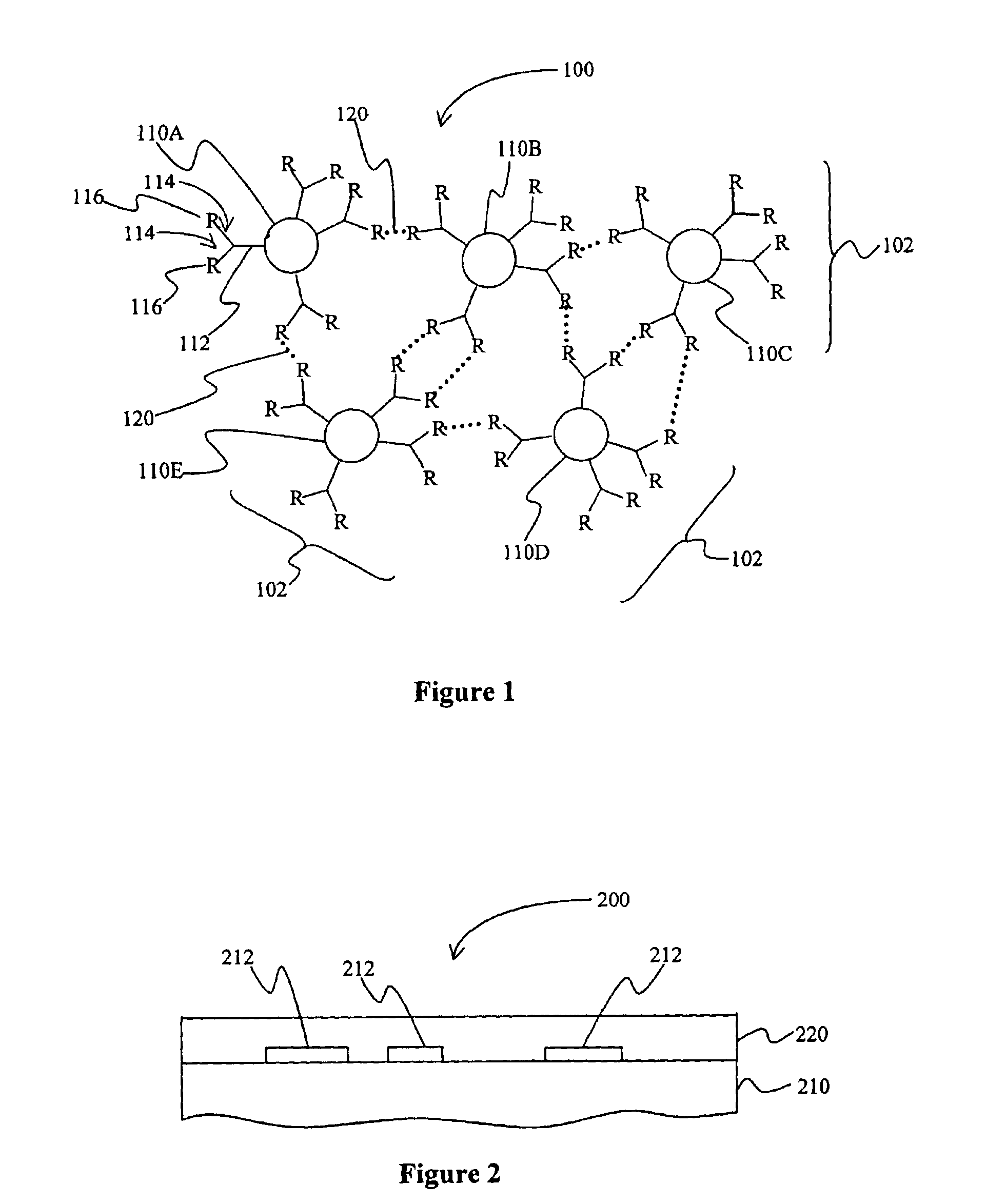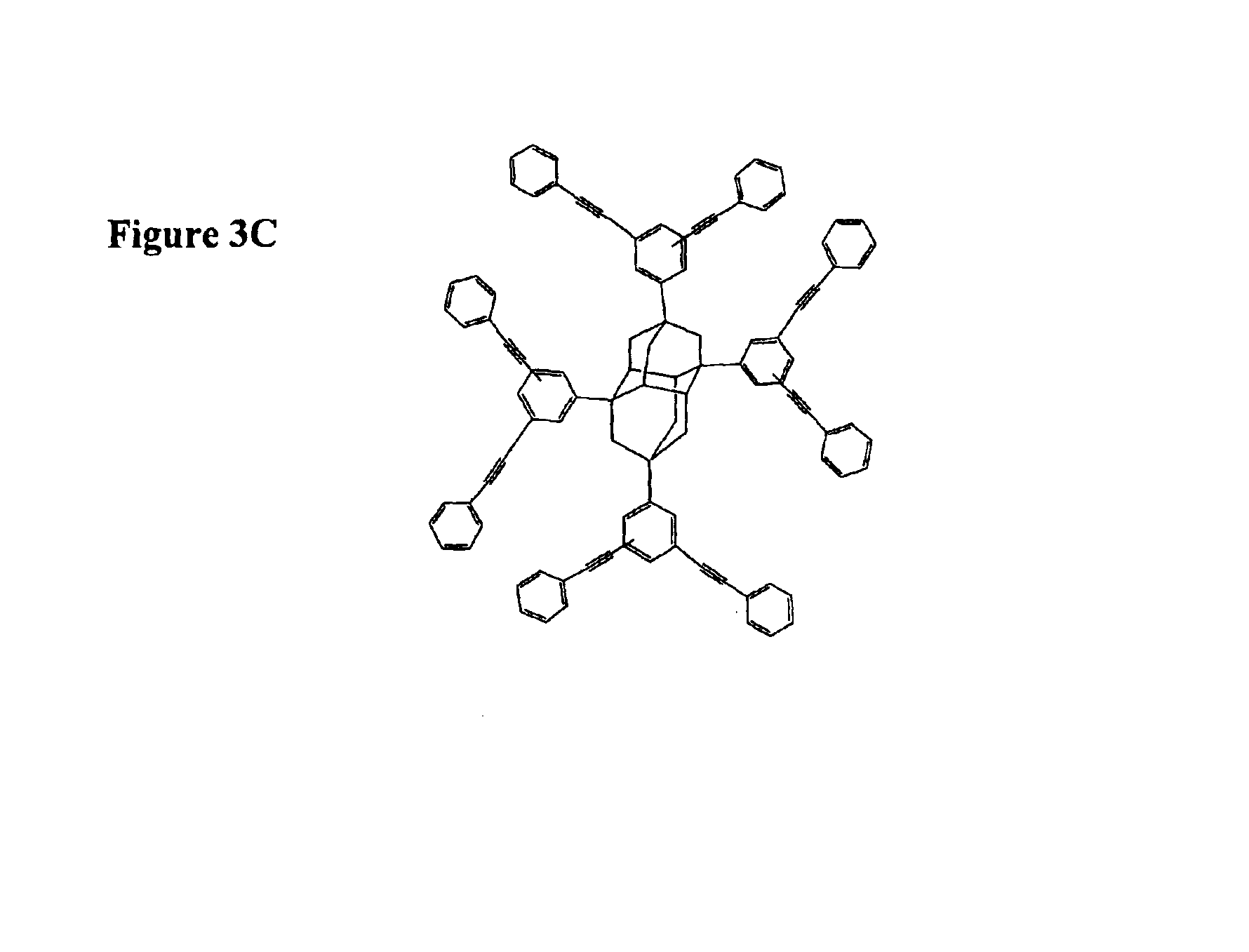Low dielectric constant materials with improved thermo-mechanical strength and processability
a technology of thermo-mechanical strength and processability, applied in the field of low dielectric constant materials, can solve the problems of reichert symmetrical, inability to exhibit many of the combined physical and chemical properties desirable, and inability to achieve the desired combination of physical and chemical properties
- Summary
- Abstract
- Description
- Claims
- Application Information
AI Technical Summary
Benefits of technology
Problems solved by technology
Method used
Image
Examples
examples
Analytical Test Methods:
Dielectric Constant: The dielectric constant was determined by coating a thin film of aluminum on the cured layer and then doing a capacitance-voltage measurement at 1 MHz and calculating the k value based on the layer thickness.
[0054]Glass Transition Temperature (Tg): The glass transition temperature of a thin film is determined by measuring the thin film stress as a function of temperature. The thin film stress measurement is performed on a KLA 3220 Flexus. Before the film measurement, the uncoated wafer is annealed at 500° C. for 60 min to avoid any errors due to stress relaxation in the wafer itself. The wafer is then deposited with the material to be tested and processed through all required process steps. The wafer is then placed in the stress gauge, which measures the wafer bow as function of temperature. The instrument can calculate the stress versus temperature graph, provided that the wafer thickness and the film thickness are known. The result is d...
PUM
| Property | Measurement | Unit |
|---|---|---|
| dielectric constant | aaaaa | aaaaa |
| dielectric constant | aaaaa | aaaaa |
| dielectric constant | aaaaa | aaaaa |
Abstract
Description
Claims
Application Information
 Login to View More
Login to View More - R&D
- Intellectual Property
- Life Sciences
- Materials
- Tech Scout
- Unparalleled Data Quality
- Higher Quality Content
- 60% Fewer Hallucinations
Browse by: Latest US Patents, China's latest patents, Technical Efficacy Thesaurus, Application Domain, Technology Topic, Popular Technical Reports.
© 2025 PatSnap. All rights reserved.Legal|Privacy policy|Modern Slavery Act Transparency Statement|Sitemap|About US| Contact US: help@patsnap.com



